Vegan Globetrotter is supported by our audience. When you purchase through one of our links, we may earn a small affiliate commission. As an Amazon Associate I earn from qualifying purchases. Your cost is not affected.
==================
Hey there! Interested in honing your knife skills? Let’s talk about The Art of Sharpening: Mastering Whetstone Knife Sharpeners. It’s all about elevating your kitchen game to a pro-level with precision and finesse. Dive in, and let’s explore the secrets behind mastering the craft of knife sharpening.
Mastering Precision With Whetstone Knife Sharpeners
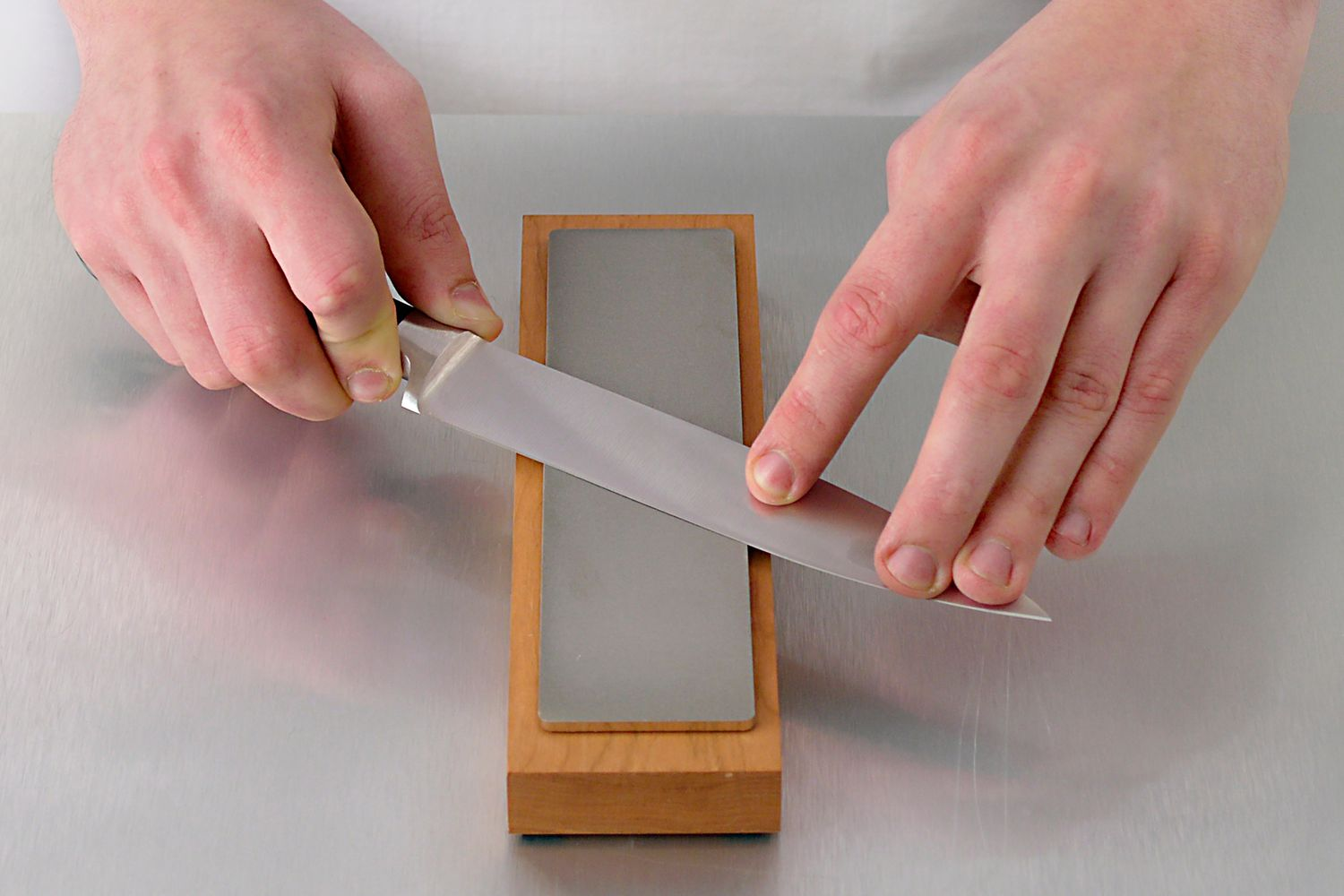
Photo by: The Spruce Eats
Do you know what’s a real hassle in the kitchen? Dealing with a dull knife. It turns simple prep into a slog, messes up your presentation, and, worst of all, it’s a safety hazard. You’re applying extra force with a blunt blade, risking slips that could lead to painful accidents—ouch!
When it comes to keeping your everyday kitchen knives sharp, here’s the scoop: most home cooks should give their blades a tune-up at least twice a year. If you’re chopping and slicing daily, you should do it more often to keep those edges in top shape. Let’s get into the nitty-gritty of sharpening and honeing your knives with Whetstone Knife Sharpeners like a pro!
What is a Whetstone?
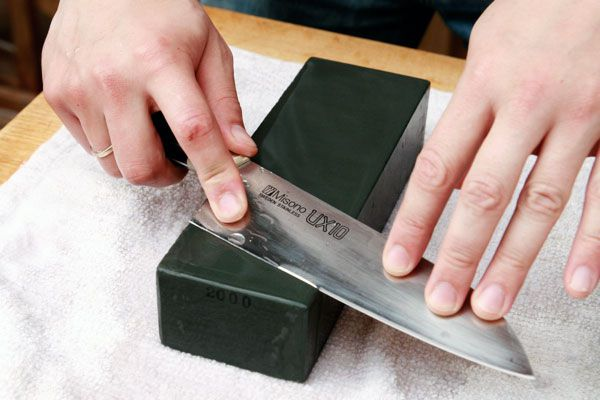
Photo by: Serious Eats
So, imagine this scenario: you’re stuck with a bunch of dull knives, making your kitchen tasks feel like a real chore. Have you ever heard of sharpening stones? They’re like the secret sauce for bringing those blades back to life. The word “whet” itself is kind of old-school and means to sharpen—pretty straightforward, right?
There are different types of sharpening stones, but most work by gently grinding away a tiny bit of metal from the blade to give you that fine, sharp edge you’re after. Some are made from natural stones, while others are crafted from materials like diamonds or ceramics.
These days, you might hear folks talk more about “sharpening stones,” but “whetstone” is still in the mix. It’s like the OG term that covers most sharpening stones, no matter what they’re made of or whether you use water or oil with them.

Exploring the Whetstone World: Different Types You Need to Know
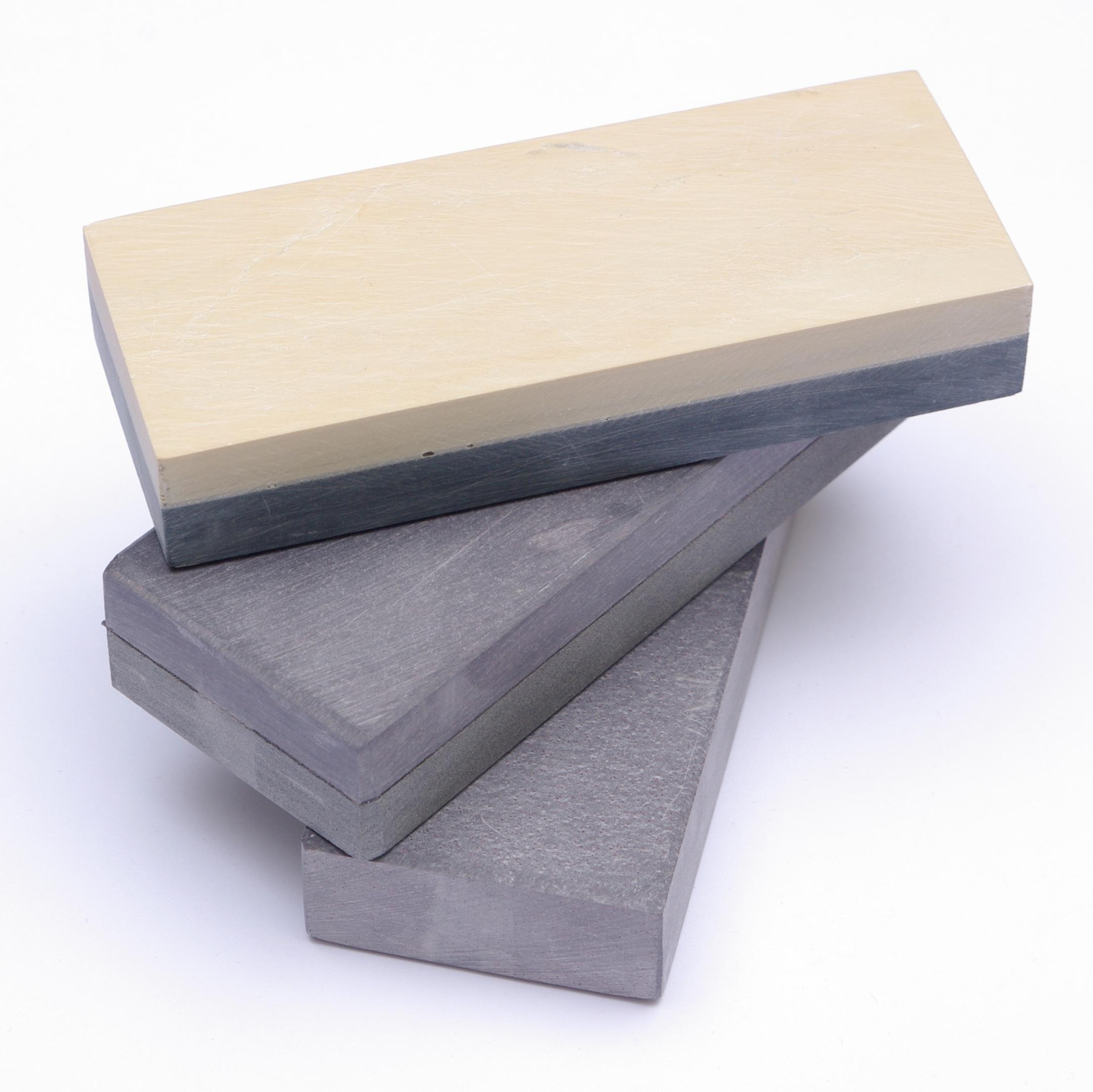
Photo by: European Blades
You’ve got quite a few options when it comes to whetstones for sharpening knives. Each type has its unique qualities and strengths. Here are the kinds of Whetstone Knife Sharpeners:

Natural Whetstones
First, you’ve got natural whetstones quarried straight from the earth. These can really vary in terms of their coarseness and mineral composition depending on where they’re from. Some famous examples are Arkansas stones and prized Japanese natural stones like the Kyoto varieties. When reviving your blade’s edge, these natural beauties are like the OGs of the sharpening stone world, essential for any whetstone knife sharpener’s toolkit.

Synthetic Whetstones
Then there are synthetic or man-made whetstones. These are usually made from aluminum oxide, silicon carbide, or ceramic materials. The big selling point is consistency—the fine grit size is standardized. They also tend to be more budget-friendly than natural stones.
Oil Stones
Oil stone are tailored to pair perfectly with honing oil as a lubricant during the sharpening process. Whether using a whetstone knife sharpener or honing your skills with traditional methods, this combination ensures a slick, smooth sharpening action to help you sharpen knives easily.
Water Stones
These best sharpening stones get lubricated with good ol’ H2O instead of oil for the water stone fans. They’re known for their fast cutting power and are super popular with pro chefs and sharpening enthusiasts who want to ensure sharp knives with their whetstone knife sharpeners.
Diamond Stones
Diamond stones are your go-to option if you’re aiming for top-notch cutting speed and long-lasting durability. These stones feature a layer of diamond abrasive particles, creating an incredibly tough sharpening surface that can easily tackle even the toughest knife blades.
Ceramic Stones
Last but not least are ceramic whetstones made from ceramic! These are prized for their consistent grits and longevity, perfect for bringing a razor-sharp edge to your knives. Whether you need to sharpen a knife blade or want to ensure you always have a sharp knife on hand, these ceramic whetstones are up for the task.
So in a nutshell, you’ve got plenty of whetstone varieties to pick from depending on your sharpening needs and whether you prefer that old-school oilstone feel or want something more modern. Just take your pick!
Deciphering Grit: Understanding its Role in Whetstones
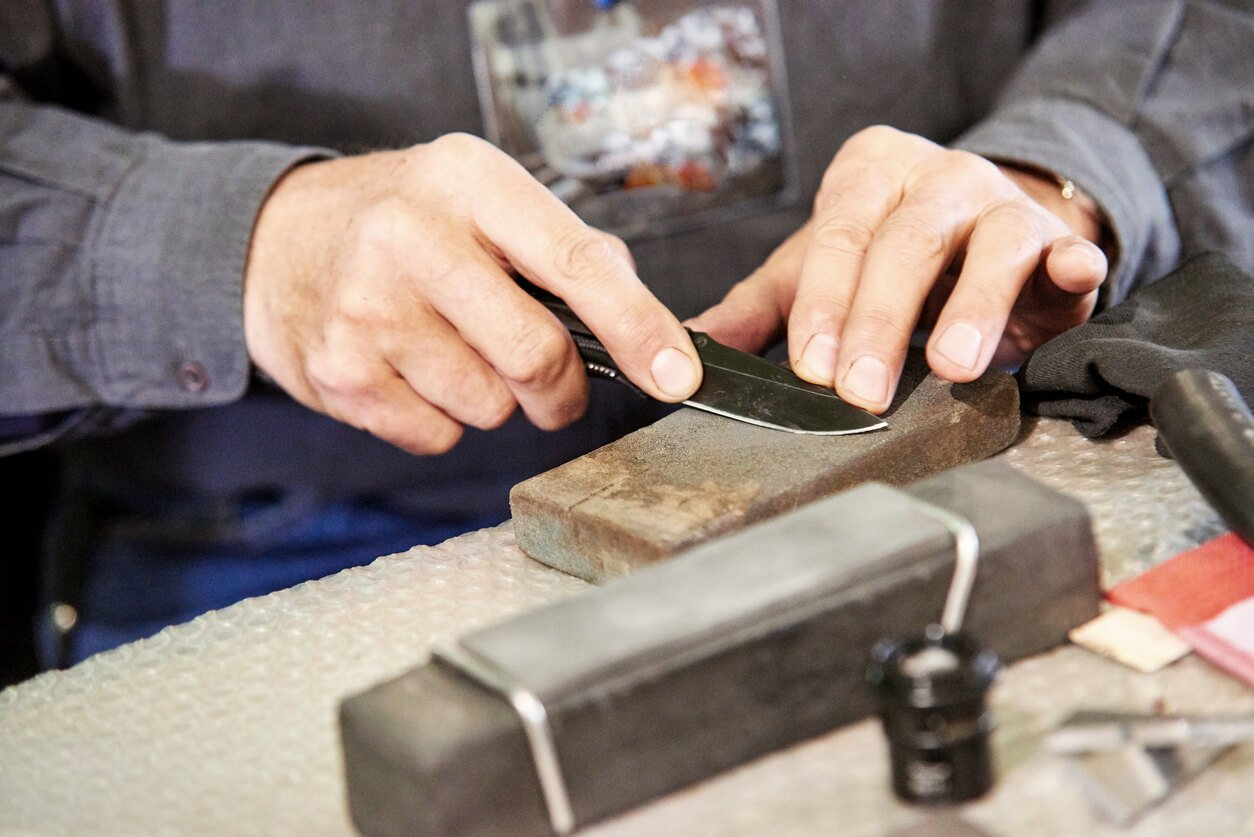
Photo by: Discover Real Food in Texas
So, grit refers to the size of the abrasive particles in the stone. These little guys do all the work, grinding away metal from your blade to get it nice and sharp. Here’s the deal with grit and how it affects sharpening:
Higher Grit (Finer Particles)
If you’ve got a whetstone with a higher grit number, it means those abrasive particles are finer. These fine grit stones are gentler and take off less material from your blade at once. The result? Razor-sharp edges that’ll have your knives cutting like a dream. But hey, it does take a bit more time to get there. These higher-grit stones are perfect for adding that final touch to already sharp blades.
Lower Grit (Coarser Particles)
On the flip side, if your whetstone has a lower grit number, the particles are bigger and more abrasive. These stones are the workhorses, removing material from your blade quickly. They’re great for fixing up nicks, chips, or seriously dull blades that need a major overhaul. But keep in mind that they won’t give you that polished edge like the fine-grit stones do.
Now, Here’s the Breakdown of Grit Sizes and Their Uses:
- Coarse (below 1000 grit): Perfect for fixing chipped or seriously dull blades.
- Medium (1000 to 3000 grit): Your everyday go-to for sharpening most knives.
- Fine (4000 to 8000 grit): Ideal for refining the edge and getting it super sharp.
- Ultra-fine (8000 grit and above): The cherry on top for polishing your blade to a mirror-like finish.
When you’re picking out a whetstone or Whetstone Knife Sharpener, consider the condition of your blade and how sharp you want it to be. That way, you can choose the right grit for the job and say goodbye to that dull blade!
Demystifying Whetstones: How Easy Are They to Use?
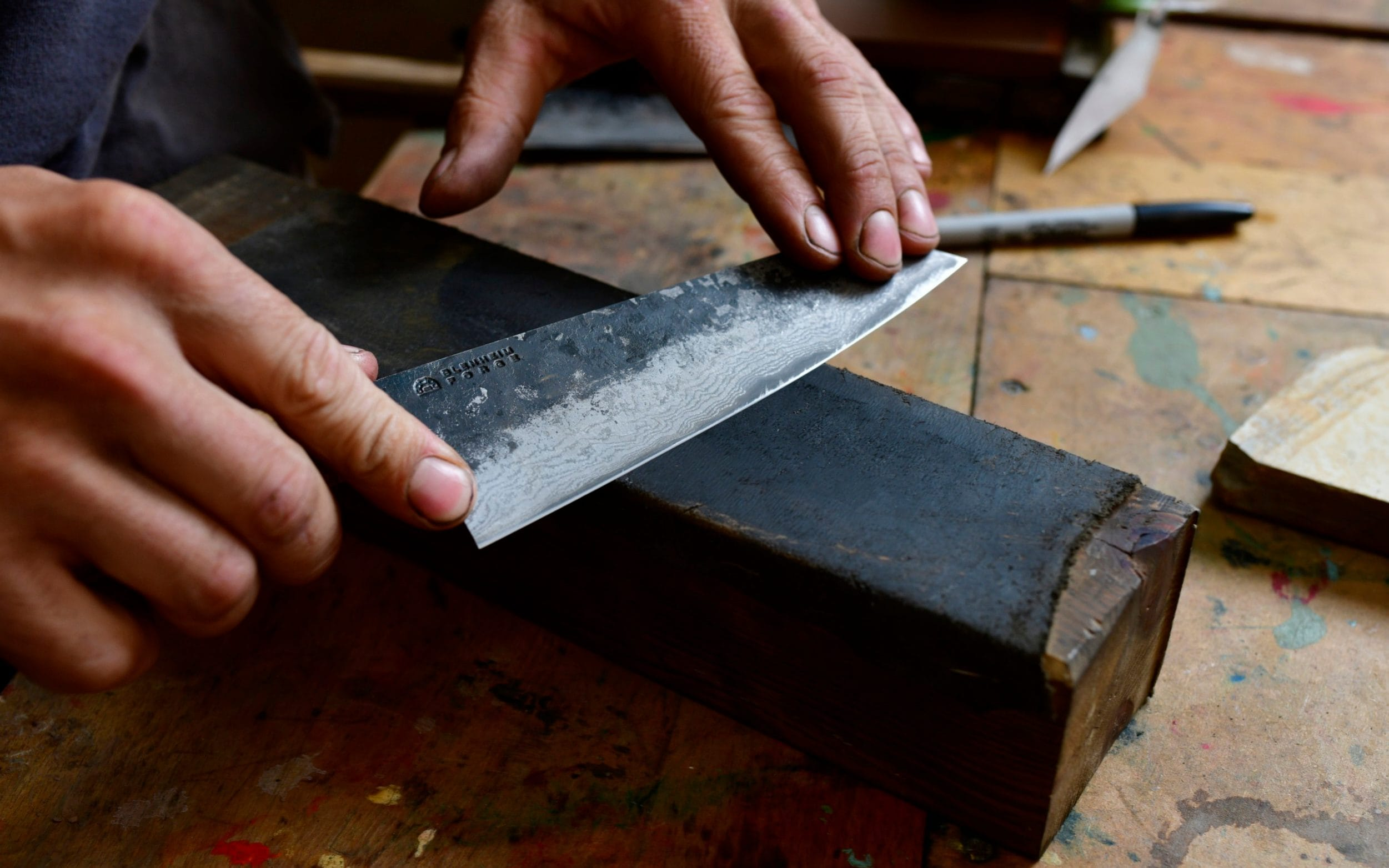
Photo by: ocean property
Using a whetstone properly takes some practice, and it’s important to follow a tutorial when learning how to use it. Otherwise, you might accidentally damage your knives. But if you’re serious about knife care, investing in a whetstone setup is totally worth it. Below is a guide on how to use a whetstone.
Mastering Knife Sharpening: A Guide to Using a Whetstone
Alright, let’s explore the art of sharpening knives with a whetstone—it’s a skill that’s totally within reach with a bit of practice.
Prep Your Whetstone

Photo by: Serious Eats
First, prep your whetstone. If it’s a water whetstone, give it a good soak for about 15-30 minutes or follow whatever the manufacturer recommends. Oil whetstones? There’s no need to prep those bad boys.
Maintain the Correct Angle
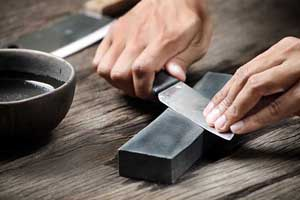
Photo by: Foodal
Next, get that angle right. Hold your blade against the whetstone at about 15-20 degrees. It’s all about finding that sweet spot. You can use an angle guide.
Make Even Strokes
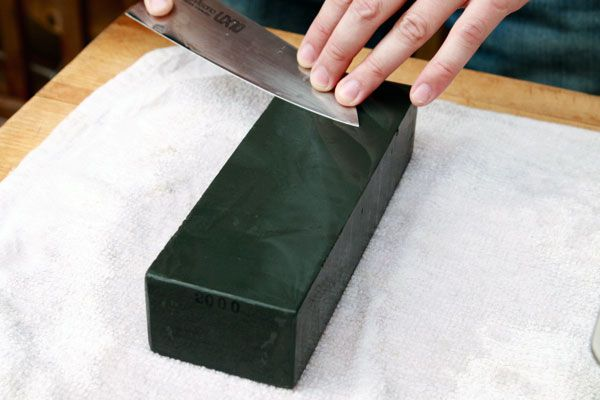
Photo by: Serious Eats
Now, let’s dive in and start sharpening—let’s get stroking. Use nice, even strokes with the blade across the whetstone, applying just enough pressure to get the job done.
Flip and Repeat
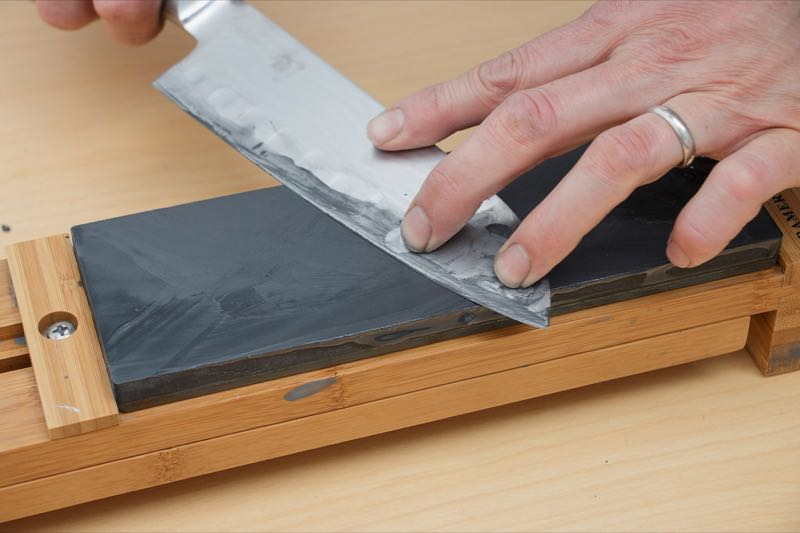
Photo by: Pro Tool Review
Flip and repeat the process on the other side. We want both sides to get some love!
Maintain a Burr

Photo by: Sharpening Handbook
Keep an eye out for a little burr that forms on the opposite side of the bevel as you sharpen—that’s a good sign you’re on the right track.
Are you feeling fancy? After the whetstone, you can give your blade a little extra love by stropping it on a leather strap. It’s like the icing on the cake for your sharpness.
Sharpening takes practice, so don’t sweat it if you’re not a pro right out of the gate. With a bit of time and elbow grease, you’ll have those knives slicing like a dream.
Cleaning Your Whetstone After Use
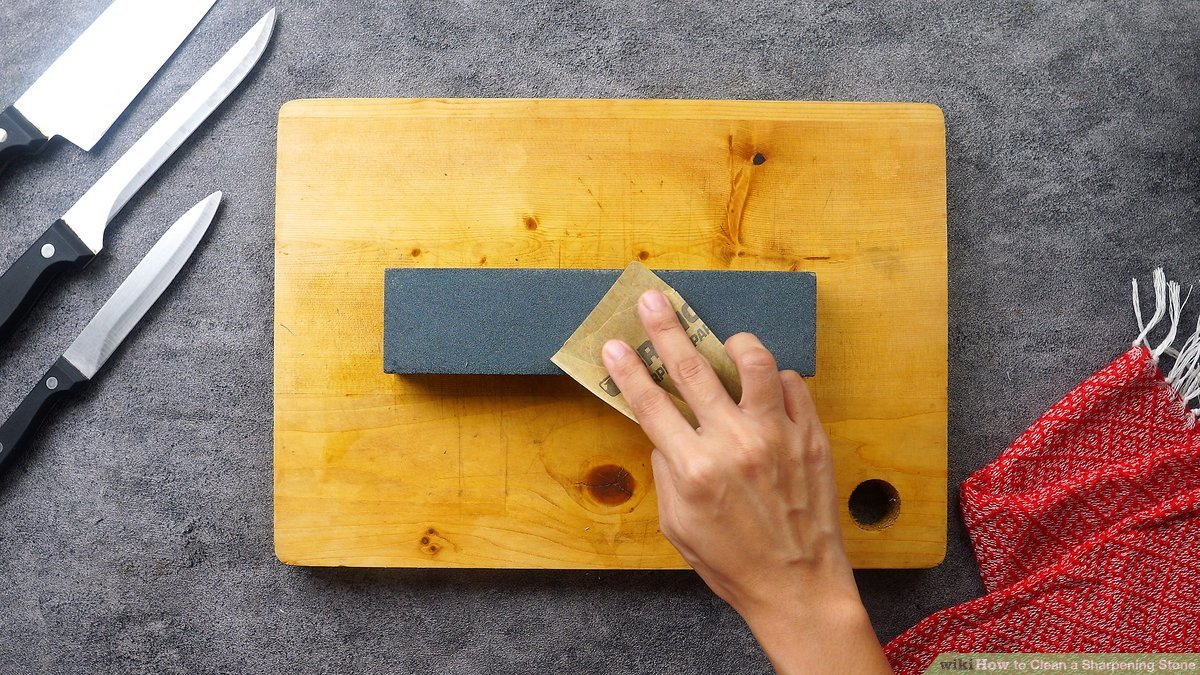
Photo by: wikiHow
Keeping your whetstone clean is crucial to its sharpening ability, especially when using whetstone knife sharpeners. After all, those tiny metal flecks from your knives can mess with its surface.
Squeeze a bit of honing oil (basically mineral oil) onto the surface and gently rub it down with a soft cloth to give it a good clean. Once you’ve done that, wipe it down with another cloth or paper towel, rinse it under water, and dry it. It’s a simple way to keep your grit stone in top shape!
Exploring Alternative Knife Sharpening Methods
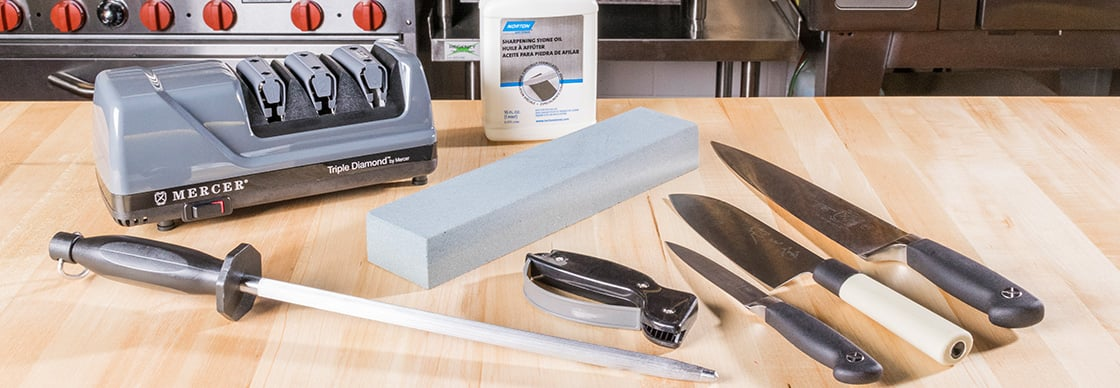
Photo by: Webstaurant Store
So, when it comes to sharpening your knife, you’ve got options—just like picking your favorite pizza toppings. Here are a few to consider:
- Sharpening Steel: Picture a metal or ceramic rod that straightens your knife’s edge. It’s great for maintaining an already sharp knife but won’t shave off any metal. Using steel is a quick and easy way to keep your knives razor sharp between proper sharpenings.
- Electric Knife Sharpener: This is like the fast-food knife sharpening option. It’s quick and easy, but it can be rough on your blade, possibly removing more metal than other methods and not as precise. There are tons of electric sharpeners, so do your homework and check out some reviews before diving in.
- Professional Sharpening Service: If DIY isn’t your style or your knife needs some TLC, you can always take it to the pros. This is an excellent option for those high-quality knives or if your blade is about as sharp as a spoon. Whether it’s a dull edge, everyday knives, damaged blades, or general sharpening, they’ve got you covered.

Sharpening Knives to Perfection: Mastering Whetstones
So there you have it—everything you need to know about mastering the art of sharpening with whetstone knife sharpeners. You’re well-equipped to elevate your kitchen game from understanding the different types of whetstone to deciphering grit sizes and mastering the sharpening process.

Remember, sharpening your knives is a skill that takes practice, so keep going if you get it right away. With patience and persistence, you’ll soon be sharpening like a pro and enjoying the benefits of razor-sharp knives in your kitchen.
And suppose you ever need a refresher or want to explore alternative sharpening methods. In that case, there are many options—from sharpening steels to electric sharpeners and professional sharpening services.
FAQs

Is It Necessary for a Whetstone to Be Wet?
To use a whetstone effectively, it’s crucial to wet it beforehand. Ideally, soak it for at least 45 minutes or follow the manufacturer’s recommendations. Wetting the stone not only prolongs its lifespan but also facilitates smoother sharpening. Dry usage can lead to quicker wear and tear, so taking the time to soak your whetstone is worthwhile!
What is a whetstone knife sharpener?
A whetstone knife sharpener is a traditional tool used to sharpen blades by grinding and honing their edges. It typically consists of a stone block with varying grit levels for different sharpening needs.
How do I use a whetstone knife sharpener effectively?
To use a whetstone effectively, start by soaking the stone in water for about 10-15 minutes. Then, hold the knife at a consistent angle and make controlled, steady strokes across the stone’s surface until the desired sharpness is achieved. Rinse the knife afterward to remove any residue.
Find Us on Social Media
🔹 Facebook: VeganGlobetrotter Join us on our Facebook page, VeganGlobetrotter, where we share mouthwatering plant-based recipes and tips to inspire your vegan lifestyle.
🔹 Instagram: _veganglobetrotter Follow us on Instagram at _veganglobetrotter to embark on a visual journey of delectable vegan dishes.
🔹Pinterest: theveganglobetrotter Dive into the world of plant-based goodness and wellness with our Pinterest account, theveganglobetrotter.
🔹 Twitter: VeganGlobetrot Stay up-to-date with the latest vegan trends, insightful articles, and exciting updates by following us on Twitter at VeganGlobetrot.

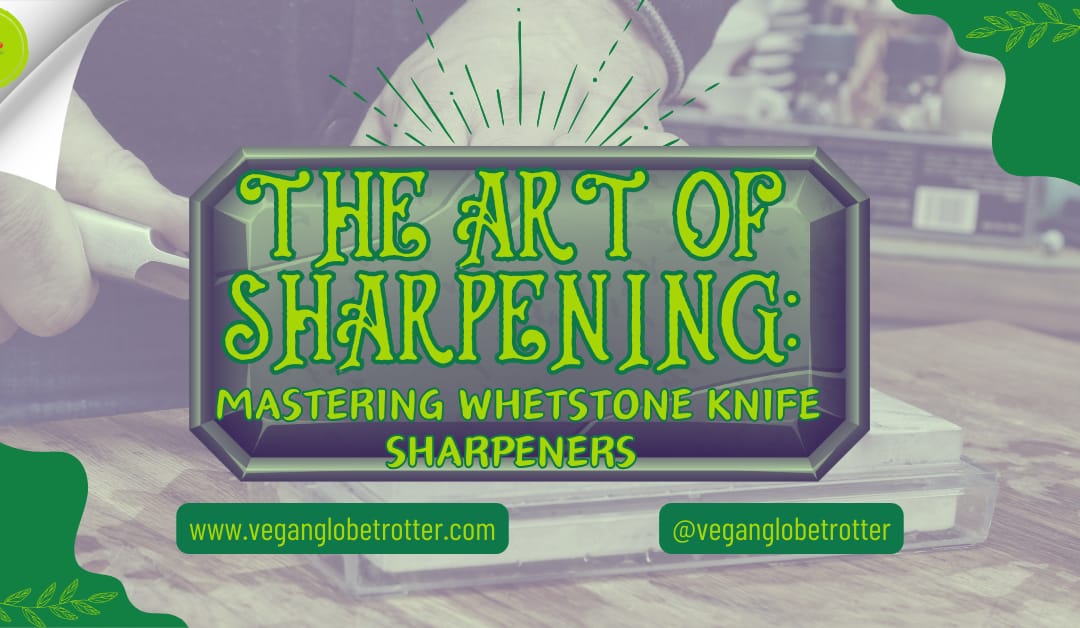



Don't miss out
when new recipes and information are added!
Join our newsletter for free recipes,
healthy living inspiration, and special offers
You have Successfully Subscribed!